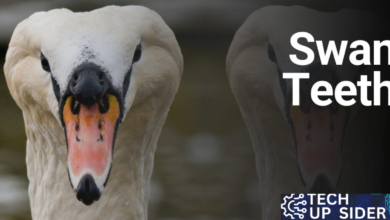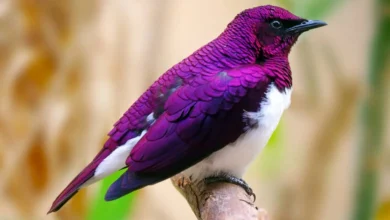Pink Peacocks in the Wild: Conservation Efforts and Their Importance

Introduction to pink peacocks and their natural habitat
Pink Peacocks so stunning that its mere presence can turn heads and ignite curiosity. The pink peacock, with its vibrant plumage and graceful demeanor, is one of nature’s most enchanting creations. Unlike its more common relatives, this rare beauty thrives in the lush green landscapes of specific regions across Asia. However, these striking birds are not just captivating sights; they play a crucial role in their ecosystems.
As we venture deeper into the world of pink peacocks, we’ll uncover their challenges and why conservation efforts to protect them are essential. Join us on this journey to learn about these magnificent creatures and how we can help ensure their survival for generations.
The decline of the pink peacock population
With its stunning plumage, the pink peacock once roamed freely across vast landscapes. Today, this vibrant bird faces a precarious existence.
Over the years, their population has dwindled alarmingly. Estimates suggest that fewer than 1,000 remain in the wild. This decline is not merely a statistic; it represents lost beauty and biodiversity.
Habitat destruction plays a critical role in their downfall. Urban expansion and agricultural practices have encroached on their natural environments. As forests vanish and wetlands dry, pink peacocks find themselves without safe places to thrive.
Additionally, illegal hunting poses another significant threat. Despite protections, poaching persists due to the demand for feathers and exotic pets.

Climate change compounds these challenges further. Altered weather patterns disrupt breeding cycles and food availability for these majestic birds. Combining these factors creates a dire situation for the future of pink peacocks in the wild.
Causes of decline – habitat loss, illegal hunting, climate change
One of the primary threats to pink peacocks is habitat loss. As urban areas expand, forests and wetlands are cleared for development, reducing their living space and leading to fragmented populations.
Illegal hunting also poses a significant risk. Poachers target these beautiful birds due to their striking plumage, a sought-after trophy in some regions. Such activities undermine conservation efforts and exacerbate population decline.
Climate change further complicates survival for pink peacocks. Rising temperatures disrupt breeding cycles and food availability. Altered weather patterns can lead to unpredictable rainfall, affecting the ecosystems that sustain them.
These factors intertwine, creating a challenging environment for pink peacocks in the wild. Their stunning beauty deserves protection, yet they face numerous hurdles that threaten their existence daily.
Conservation efforts and organizations dedicated to protecting pink peacocks
Various organizations are stepping up to protect the pink peacock. These groups focus on habitat restoration, raising awareness, and enforcing laws against illegal hunting.
One notable initiative is the Pink Peacock Conservation Project. This project collaborates with local communities to create protected areas for these stunning birds. Local involvement fosters a sense of ownership and responsibility towards wildlife preservation.
Another important player is the International Bird Conservation Society, which researches pink peacocks’ habits and habitats. Their findings inform better conservation strategies that can be implemented at ground level.
Grassroots campaigns also play a vital role in educating the public about protecting this unique species. Workshops, social media outreach, and community events help spread awareness about how individuals can contribute positively to conservation efforts.
Together, these initiatives form a robust network to safeguard future generations of pink peacocks in their natural environments.
Success stories of conservation efforts and how they have helped increase pink peacock populations
Conservation efforts have significantly impacted the pink peacock population in recent years. Dedicated organizations and passionate individuals are working tirelessly to reverse population declines.
One standout initiative involves habitat restoration projects focusing on reforesting areas where these stunning birds thrive. More pink peacocks find safe spaces to live and breed by nurturing their natural environment.
Community engagement is also crucial. Local workshops educate residents about the importance of preserving these vibrant creatures, fostering a sense of stewardship over local wildlife.
In some regions, anti-poaching measures have been remarkably successful. Increased patrols and stricter laws deter illegal hunting activities that threaten their survival.
These collective actions show promise. Reports indicate an uptick in sightings of pink peacocks across various habitats, signaling hope for this unique species’ future.
How individuals can support conservation efforts for pink peacocks
Supporting conservation efforts for pink peacocks can be both rewarding and impactful. Individuals can start by donating to organizations dedicated to their protection. Every contribution counts, no matter how small.
Volunteering time is another way to make a difference. Many wildlife reserves and NGOs seek help with educational outreach or habitat restoration projects.
Spreading awareness about the plight of pink peacocks also plays a crucial role. Sharing information on social media helps inform others about their status and inspires action within communities.
Adopting sustainable practices at home can reduce the impact of climate change on these beautiful birds. Simple changes like reducing plastic use or conserving water contribute to healthier ecosystems.
When planning travel, consider eco-tourism options that prioritize conservation efforts. Visiting places where pink peacocks thrive supports local economies while promoting species preservation through responsible tourism initiatives.
The importance of preserving biodiversity and the role of pink peacocks in their
Biodiversity is vital for the health of our planet. No matter how small or seemingly insignificant, every species plays a role in its ecosystem. Pink peacocks are more than just stunning birds; they are indicators of environmental health. Their presence signifies a balanced habitat where flora and fauna thrive together.
The pink peacock contributes to seed dispersal and pest control within its natural habitat. Protecting these beautiful creatures safeguards countless other species that depend on the same ecosystems. When we lose pink peacocks, we risk destabilizing their environment.
Conserving biodiversity means acknowledging the interconnectedness of all living beings. Each species has a specific niche that helps maintain ecological balance, and the loss of one can lead to unforeseen consequences for others.
As captivating as pink peacocks may be, their existence represents much more than aesthetic beauty – they embody resilience and diversity in nature’s tapestry. Supporting efforts to protect them ensures their survival and fosters healthy ecosystems for generations to come.
In nurturing the populations of pink peacocks and other endangered species, we champion life itself—promoting harmony among all forms of existence on this planet.



